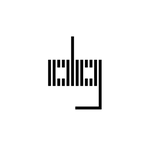
VIDEO CMS DESIGN FOR OTTs
UX DESIGN • RESEARCH • BUSINESS METRICS
Context
Project’s key objective
Video CMS or video streaming CMS is a video content management system solely built for streaming services to store, organize, and manage videos securely and effectively via a centralized dashboard.
Case study aims to provide a Video CMS platform meeting the needs of two user types (Editor and Publisher) while uploading and managing content.
Goals
Problem / Strategies / KPIs/ Success Metrics

The Affinity Map
Some key questions


Benchmarking
Indirect - direct competitors and Hulu CMS Guideline have been examined. Click to see detailed benchmarking...


User Flow

Prototypes
Prototype for Content Rejection by Publisher.
Prototype for Upload Content by Editor. After uploading the video, it chooses which series belongs to which season.
User Research
Research Brief
Background: Video CMS or video streaming CMS is a video content management system solely built for streaming services to store, organize, and manage videos securely and effectively via a centralized dashboard
Problem definition: Content is the king when it comes to OTT streaming. But, to organize, manage, and play videos might be quite strenuous for a platform that owns oodles of content waiting to be published. The task is even mountainous when the volume of TV series is massive. So, how does one efficiently manage content for TV series and movies in this fast-paced industry without compromising on delivering a quality user experience?
Goals: We need to provide the best customer experience possible on Content management pages to convince and prompt the users into upload content (especially TV series) and eventually add metadata to series, seasons and episodes.
Scope: Suggested solutions that may solve problems and achieve your goals.
Target users: users that used CMS before
- White-collar,
- 25-28, educated
- Multi-tasking people
- Like to spend time to organize things and edit
- Take good care of their house and themselves
Stakeholders: PM, Duygu Gökoğlu
User Interview Questions

What I’d do differently next time.
Conclusion / Lesson Learned
-
Iterate as much as you can. In the beginning stages, I’ve explored so many different options to try finding the right solution for Professional users.
-
Focus more on tradeoffs with each direction. I can better communicate my design decisions to myself, my mentor, and future recruiters.
-
Be insight-not process-driven. Despite hours of research + development, my first version of this case study was full of unnecessary text at this stage instead of tying everything into the bigger question- “so how does this fit into the bigger picture”? Hence, I cut down the copy by more than 60% and focused on the major points in my project. Hence, going forward I believe focusing more on the insights will improve my storytelling abilities to others.
-
You didn’t fail- you just found 100 ways that didn’t work. From noticing mistakes in my UI to uncovering more foundational UX problems in my case, I’m thankful to have constantly asked for feedback from my peers and my mentor. In the end, I pushed to have the platform as best I could, and did not let my own thinking stop me from questioning if my own decisions were truly best for the user.
Thanks for reading!
For more work inquiries, or to grab a coffee do email me at duygugokoglu@gmail.com
 |  |  |
|---|---|---|
 |
